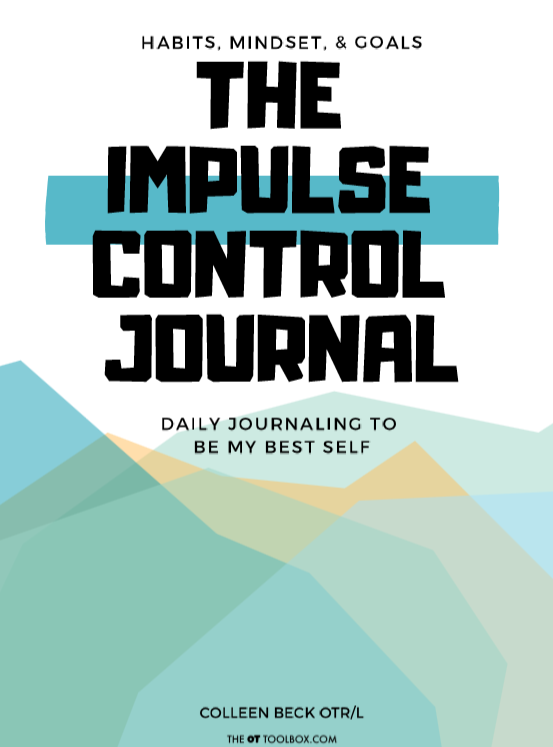Did you know there are several types of self-control that impact the way we act, behave, speak, and move? These types of control impact how we learn, communicate with others, and function in our daily tasks. There is more to self control than controlling impulses and self-regulation. Understanding these various differences can make a difference in learning how to stop and think, and gain self control in daily occupations.
In this article, we will break down what the components and types of self-control are, and provide you options on how to improve this important skill.
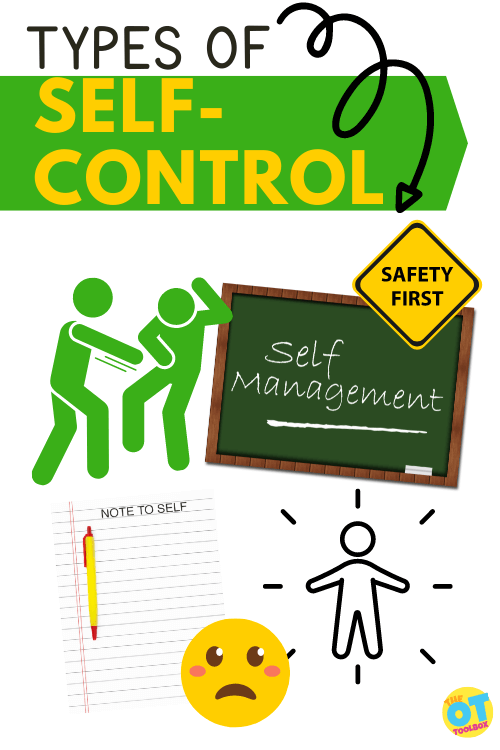
WHAT IS SELF-CONTROL?
Before we can dive into each type of self-control, let’s define it at its basic level.
The definition of self-control is a component of inhibitory control, and refers to the ability to regulate one’s emotions, thoughts, and behavior based on and as a result of external and internal temptations and impulses. Self-control is an executive function and is a cognitive process that is necessary for regulating one’s behavior in order to achieve specific goals.
Break down of Self-control:
An executive function that gives the…
Ability to regulate emotions, thoughts, and behaviors…
With consideration for temptations and impulses…
In order to achieve goals.
3 TYPES OF SELF CONTROL
Although different sources may describe self-control in different ways, most can agree on 3 types of self-control.
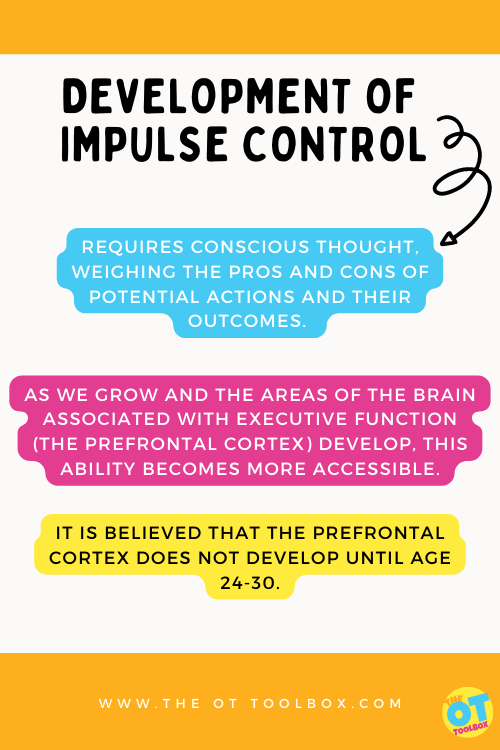
1. Impulse Control
Impulse control requires conscious thought, weighing the pros and cons of potential actions and their outcomes. For young children, this is nearly impossible. As we grow and the areas of the brain associated with executive function (the prefrontal cortex) develop, this ability becomes more accessible.
It is believed that the prefrontal cortex does not develop until age 24-30. Now you understand why teenagers and college students are so impulsive!
Poor Impulse Control –
Impulsivity, or acting before thinking, is caused by a lack of impulse control. In children, this may be seen as over-eating preferred foods, blurting out answers in class, interrupting others, or acting out in aggression.
More about what impulse control is here! Additionally, these impulse control strategies will get you started on addressing this area.
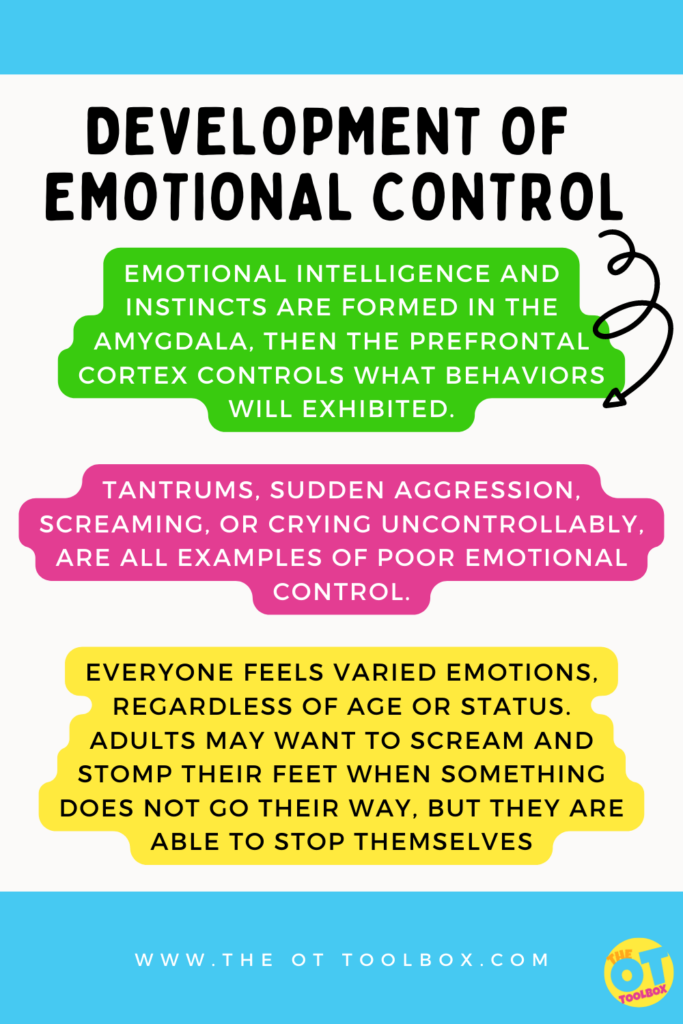
- Emotional Control
Everyone feels varied emotions, regardless of age or status. Adults may want to scream and stomp their feet when something does not go their way, but they are able to stop themselves, as such actions would be inappropriate. In fact, they are most often able to stop inappropriate actions, and choose the appropriate emotional response.
Emotional control is the result of a collaboration in the brain. Emotional intelligence and instincts are formed in the amygdala, then the prefrontal cortex controls what behaviors will exhibited. As with impulse control, young children will need time and education, in order to use their thinking brains to stop and control their emotional behaviors.
Poor Emotional Control –
Tantrums, sudden aggression, screaming, or crying uncontrollably, are all examples of poor emotional control. Usually it is young people who struggle with poor emotional control. Some adults, particularly those with mental health conditions, may also have limited emotional control.
When emotional control is limited, actions may be driven by emotions, not logic. Negative outcomes, that jeopardize health and safety, may ensue.
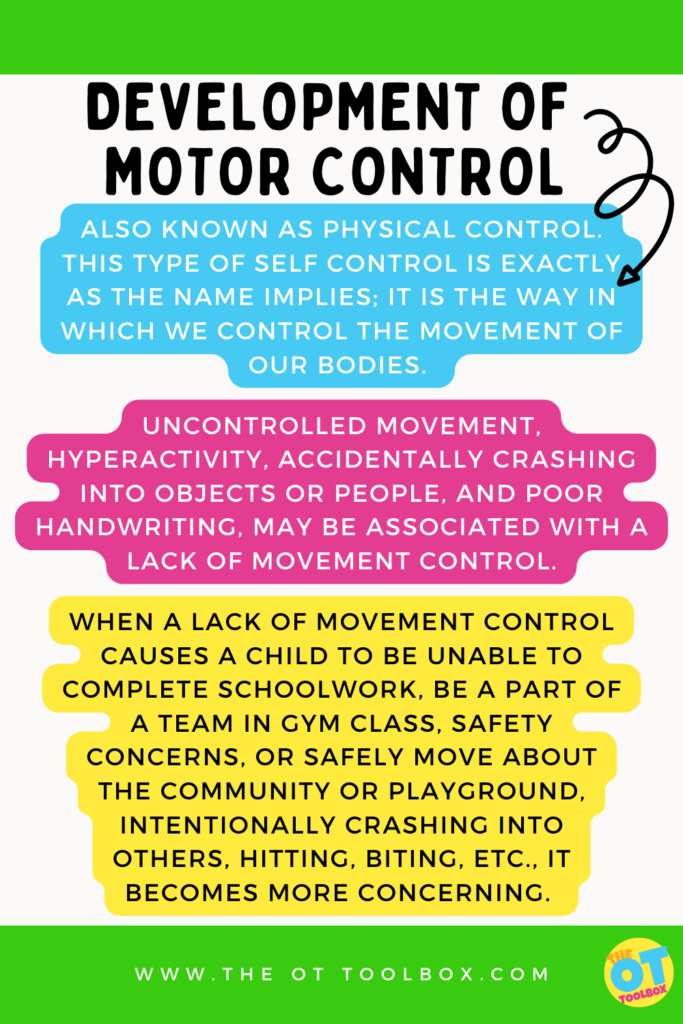
- Movement Control
Movement control, also known in the literature as physical control, is one of the lesser known aspects of self-control. This type of self control is exactly as the name implies; it is the way in which we control the movement of our bodies.
The OT Toolbox covers the impact of poor self-control and resulting behavior, in this resource titled attention and behavior. The blog covers safety issues such as darting into a parking lot, touching a hot stove, and other movement related self-control situations.
Good movement control may be observed when a child sits upright at their desk, quietly, without extraneous movements, clearly ready to learn. Many people in organized sports also have good movement control, as they practice drills, and coordinate their bodies in order to meet a common goal.
Poor Movement Control –
Uncontrolled movement, hyperactivity, accidentally crashing into objects or people, and poor handwriting, may be associated with a lack of movement control. Having some wiggles before recess, then being able to sit still afterwards, does not pose an issue for most. In fact, it is pretty typical to need movement breaks throughout the day.
When a lack of movement control causes a child to be unable to complete schoolwork, be a part of a team in gym class, safety concerns, or safely move about the community or playground, intentionally crashing into others, hitting, biting, etc., it becomes more concerning.
Resources TO IMPROVE SELF-CONTROL
All children should be taught self-control. It is not something that they just inherently “know”. It is a complicated subject, that requires positive adult modeling, education, and of course, practice!
The OT Toolbox has tons of great posts on the types of self control and its impact:
- Impulse Control Journal
- Impulse Control Worksheets
- Quick Tips: Impulse Control
- Zones of regulation for Self-Control
- How to Help Kids Learn Self-Control
- How to Support Self-Regulation in Young Children
Do you think that self-control should be taught in schools? There is already so much on our educators’ to-do list, but this one may be worth integrating.
Here’s why: Self-control is integral to the ability to learn and apply knowledge, but it is also important to a healthy social life, too!
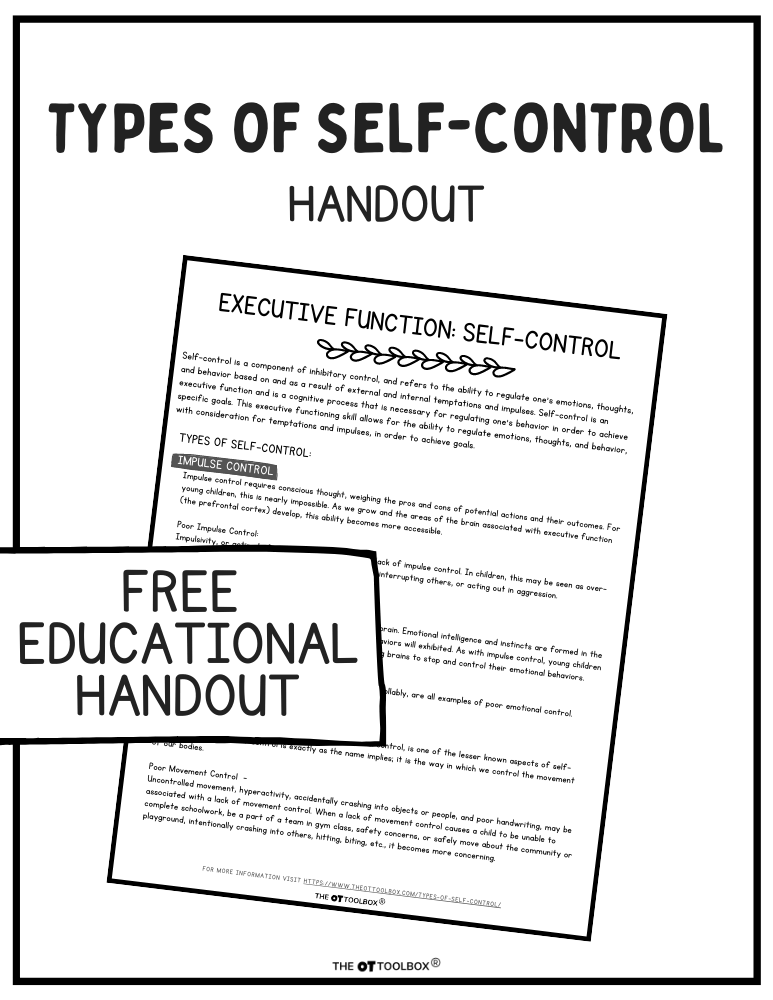
Free Handout: Types of Self-Control
Education supports advocacy! The information in this blog has been created into a handy handout, designed for advocacy and education on the types of self-control. These aspects of executive functioning are not always connected as an executive functioning skill, so that’s where this handout comes into the picture.
Want a copy to add to your therapy toolbox? Enter your email address below. You’ll receive a copy in your email inbox.
This resource is also available inside The OT Toolbox Member’s Club. Members can easily access this printable as well as all of the other of free downloads on the site. No need to enter your email address for each one. Simply head to the dashboard page, go to the Educational Handouts toolbox, and print and go!

Sydney Thorson, OTR/L, is a new occupational therapist working in school-based therapy. Her
background is in Human Development and Family Studies, and she is passionate about
providing individualized and meaningful treatment for each child and their family. Sydney is also
a children’s author and illustrator and is always working on new and exciting projects.
The Impulse Control Journal…a printable resource for helping kids strategize executive functioning skill development. When saying “calm down” just isn’t enough…
When a child is easily “triggered” and seems to melt down at any sign of loud noises or excitement…
When you need help or a starting point to teach kids self-regulation strategies…
When you are struggling to motivate or redirect a child without causing a meltdown…
When you’re struggling to help kids explore their emotions, develop self-regulation and coping skills, manage and reflect on their emotions, identify their emotions, and more as they grow…
Grab the Impulse Control Journal to build organizational strategies, planning, prioritization, habits, and mindset in kids.


